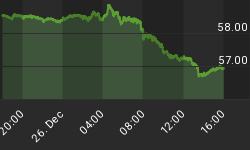Japan is doomed. Again.
A couple of years ago, the Bank of Japan began to pursue QE, with the intention of doubling its money supply. While this is a bad plan for almost every country, it was exactly the right plan for Japan, whose economy had been mired in deflation from 1999 until this policy began (see chart, source Bloomberg).

To a monetarist, it was no surprise that Japan was experiencing deflation. Since the early 1990s, annual money supply growth in Japan has been below 4% (see chart, source Bloomberg). It averaged 2.4% from 1992-2012. (The new policy pushed M2 growth above 4% for the first time since the 1990s, albeit briefly as it turned out).

Remember, the monetarist equation says MV≡PQ. With unchanged money velocity and an economy with, say, a 3% potential growth rate in GDP, a 2.4% growth in M2 should result in deflation. And, in fact, just as in the US lower interest rates in Japan produced lower monetary velocity.
Quantitative easing does nothing to help economic growth, and so QE was the wrong prescription for most of the world after 2010. But if deflation is your disease, QE is your cure and that is Japan's situation. When the BOJ decided to start QE, money supply growth moved above 4% for the first time in years, and "miraculously" core inflation moved above zero as the first chart above illustrates. (Abstract from the spike over 2%, which was due to a one-time consumption tax effect; but core inflation in Japan was over 1% even excluding that spike). When that happened, I wrote in our Quarterly Inflation Outlook that Japan was no longer the poster child for inept central banking; that award had been moved to the European Central Bank.
Unfortunately, even though QE did exactly what it was supposed to do, to Japanese policymakers it seemed to have failed because their intention had been to raise real growth. So, since the hammer they were using did not function very well as a saw, they discarded the tool.
Japan's problems with growth are structural. There's not a lot that can be done, and nothing that can be done in the short run and with monetary policy, about the demographic train wreck they are experiencing. But the problem with inflation was, and is, fixable. But only if the Bank of Japan does QE, and a lot of it, and keeps doing it. As they shifted from straight QE to targeting negative interest rates, money supply growth began to ebb (now back to 3.3% y/y) and inflation began to roll over (now 0.3% ex-food-and-energy). Indeed, with lower rates the BOJ is making it worse by helping to push money velocity even lower.
There had been hope that the BOJ might abandon the NIRP experiment, which was clearly not working by every metric you can use to measure it, and go back to the policy that had been working at least with respect to the fixable problem. But instead, last night the Bank of Japan "shifted the policy framework" to targeting the yield curve. According to the Bloomberg story, the Bank is moving away from a "rigid target for expanding the money supply, while seeking to control bond yields across different maturities."
So money? The heck with that. We just want to make sure that prices are at the "right" levels. Clearly, the BOJ thinks the market is totally failing when it comes to setting the interest rate correctly (to be fair, all central banks seem to now view interest rates as a tool rather than an indicator, as they used to), and so it is assuming control of that job. Clearly, only the wise policymakers at the BOJ can divine the right level for interest rates: the one which leads to great growth and moderate inflation for the country. Sure.
Japan had a chance. Whether by design or pure chance, they had stumbled on the policy that was able to banish the deflation that had plagued them, and perverted decision-making, for two decades. But because they are pursuing a pot of gold at the end of the rainbow - growth springing from monetary policy in the same way that you can plant olive trees and harvest carrots - they abandoned the working policy to pursue one that has no chance of success.
Japan is back in its comfort zone: the developed world's basket case. Congratulations to the Bank of Japan.
You can follow me @inflation_guy!
Enduring Investments is a registered investment adviser that specializes in solving inflation-related problems. Fill out the contact form at http://www.EnduringInvestments.com/contact and we will send you our latest Quarterly Inflation Outlook. And if you make sure to put your physical mailing address in the "comment" section of the contact form, we will also send you a copy of Michael Ashton's book "Maestro, My Ass!"
















